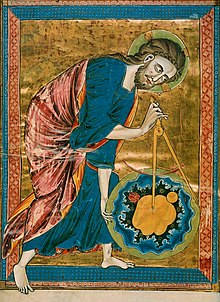 Global Information
Global InformationScience and the Catholic Church information

The relationship between science and the Catholic Church is a widely debated subject. Historically, the Catholic Church has been a patron of sciences. It has been prolific in the foundation and funding of schools, universities, and hospitals, and many clergy have been active in the sciences. Some historians of science such as Pierre Duhem credit medieval Catholic mathematicians and philosophers such as John Buridan, Nicole Oresme, and Roger Bacon as the founders of modern science.[1] Duhem found "the mechanics and physics, of which modern times are justifiably proud, to proceed by an uninterrupted series of scarcely perceptible improvements from doctrines professed in the heart of the medieval schools."[2] Historian John Heilbron says that "The Roman Catholic Church gave more financial and social support to the study of astronomy for over six centuries, from the recovery of ancient learning during the late Middle Ages into the Enlightenment, than any other, and probably all, other Institutions."[3] The conflict thesis and other critiques emphasize the historical or contemporary conflict between the Catholic Church and science, citing, in particular, the trial of Galileo as evidence. For its part, the Catholic Church teaches that science and the Christian faith are complementary, as can be seen from the Catechism of the Catholic Church which states in regards to faith and science:
Though faith is above reason, there can never be any real discrepancy between faith and reason. Since the same God who reveals mysteries and infuses faith has bestowed the light of reason on the human mind, God cannot deny himself, nor can truth ever contradict truth. ... Consequently, methodical research in all branches of knowledge, provided it is carried out in a truly scientific manner and does not override moral laws, can never conflict with the faith, because the things of the world and the things of faith derive from the same God. The humble and persevering investigator of the secrets of nature is being led, as it were, by the hand of God despite himself, for it is God, the conserver of all things, who made them what they are.[4]
Catholic scientists, both religious and lay, have led scientific discovery in many fields.[5] From ancient times, Christian emphasis on practical charity gave rise to the development of systematic nursing and hospitals and the Church remains the single largest private provider of medical care and research facilities in the world.[6] Following the Fall of Rome, monasteries and convents remained bastions of scholarship in Western Europe and clergymen were the leading scholars of the age – studying nature, mathematics, and the motion of the stars (largely for religious purposes).[7] During the Middle Ages, the Church founded Europe's first universities, producing scholars like Robert Grosseteste, Albert the Great, Roger Bacon, and Thomas Aquinas, who helped establish the scientific method.[8]
Today almost all historians agree that Christianity (Catholicism as well Protestantism) moved many early-modem intellectuals to study nature systematically. Historians have also found that notions borrowed from Christian bellef found their ways into scientific discourse, with glorious results.
— Noah J. Efron[9]
During this period, the Church was also a major patron of engineering for the construction of elaborate cathedrals. Since the Renaissance, Catholic scientists have been credited as fathers of a diverse range of scientific fields: Nicolaus Copernicus (1473-1543) pioneered heliocentrism, René Descartes (1596-1650) father of analytical geometry and co-founder of modern philosophy, Jean-Baptiste Lamarck (1744-1829) prefigured the theory of evolution with Lamarckism, Friar Gregor Mendel (1822-1884) pioneered genetics, and Fr Georges Lemaître (1894-1966) proposed the Big Bang cosmological model.[10] The Society of Jesus has been particularly active, notably in astronomy; the Papacy and the Jesuits initially promoted the observations and studies of Galileo Galilei, until the latter was put on trial and forced to recant by the Roman inquisition. Church patronage of sciences continues through institutions like the Pontifical Academy of Sciences (a successor to the Accademia dei Lincei of 1603) and Vatican Observatory (a successor to the Gregorian Observatory of 1580).[11]
According to historian John L. Heilbron, "Between 1650 and 1750, four Catholic churches were home to the best solar observatories in the world. Built to fix an unquestionable date for Easter, they also housed instruments that threw light on the disputed geometry of the solar system."[12]
- ^ Wallace, William A. (1984). Prelude, Galileo and his Sources. The Heritage of the Collegio Romano in Galileo's Science. N.J.: Princeton University Press.
- ^ Lindberg, David C.; Westman, Robert S., eds. (27 July 1990) [Duhem, Pierre (1905). "Preface". Les Origines de la statique 1. Paris: A. Hermman. p. iv.]. "Conceptions of the Scientific Revolution from Bacon to Butterfield". Reappraisals of the Scientific Revolution (1st ed.). Cambridge: Cambridge University Press. p. 14. ISBN 978-0-521-34804-1.
- ^ Heilbron, J. L. (June 2009). The Sun in the Church. Harvard University Press. p. 3. ISBN 9780674038486.
- ^ "Saint Charles Borromeo Catholic Church of Picayune, MS - Faith - Catechism of the Catholic Church - Table of Contents with Paragraph Numbers". www.scborromeo.org. 159, 37. Retrieved 22 May 2017.
- ^ "Fathers of Science | Catholic Answers". www.catholic.com. Archived from the original on 12 April 2014. Retrieved 23 May 2017.
- ^ "Facts - Statistics". www.chausa.org. Retrieved 23 May 2017.
- ^ "Middle-Ages Science - Medieval Period - History of Science". Retrieved 23 May 2017.
- ^ Woods, Thomas E. "The Catholic Church and the Creation of the University". Retrieved 23 May 2017.
- ^ Numbers, Ronald L. (8 November 2010). Galileo Goes to Jail and Other Myths about Science and Religion. Harvard University Press. pp. 80–81. ISBN 9780674057418.
- ^ "Georges Lemaître - Important Scientists - the Physics of the Universe".
- ^ "Home page of the Pontifical Academy of Sciences". www.pas.va. Retrieved 23 May 2017.
- ^ Heilbron, J. L. (June 2009). The Sun in the Church. Harvard University Press. p. 3. ISBN 9780674038486.